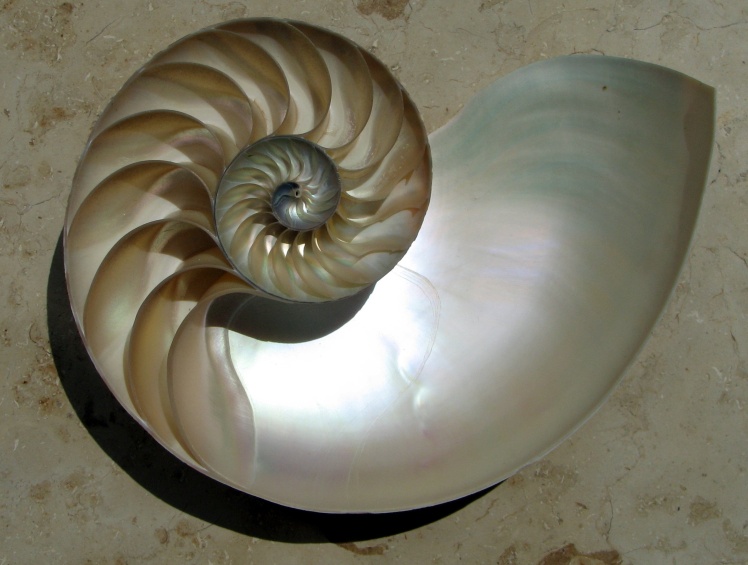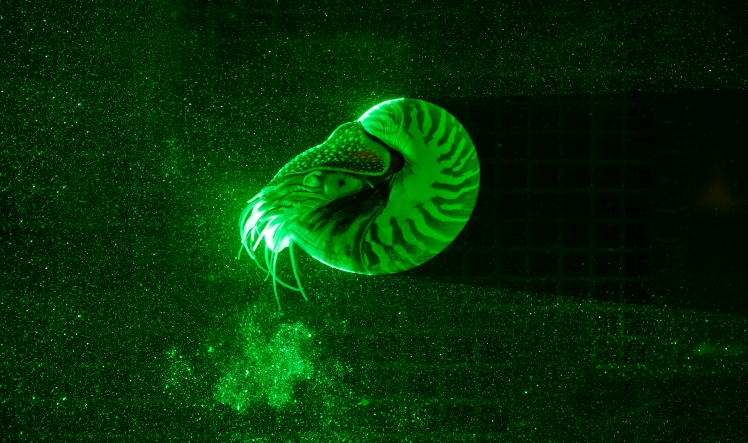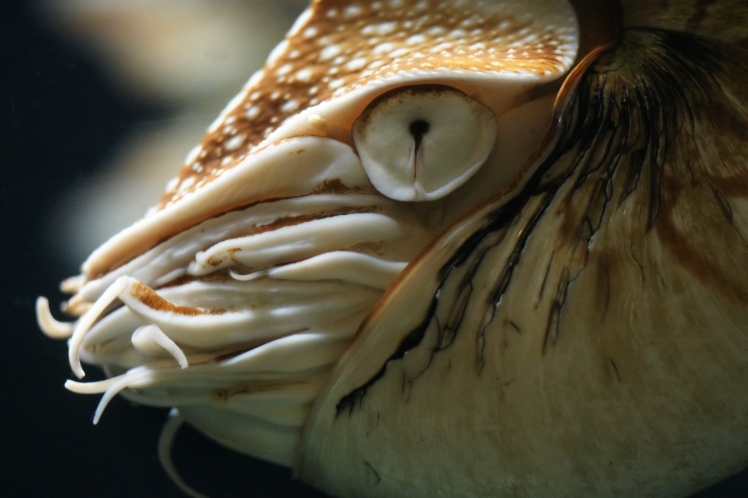Down in the depths of the Pacific ocean lives a group of creatures that has remained relatively unchanged for over 500 million years, that’s HALF A BILLION YEARS. To put that in context, Homeo sapiens have existed for approximately 2 million years and these guys were even bobbing around when plants began to colonise the land. We’re talking about the infamous living fossils of the deep seas, the nautiluses!

Taxonomy & Etymology
Today, there are thought to be six living species of nautilus from two genera within the Nautilidae family, but the the name ‘nautilus’ generally refers to the chambered nautilus (Nautilus pompilius) which is largest and most common of the six species. These other species include the adorably named ‘bellybutton nautilus’, Nautilus macromphalus, and the less adorably named ‘crusty nautilus’, Allonautilus scrobiculatus.
The word ‘nautilus’ comes from the Latin form of the Greek word for ‘sailor’, and along with squid, cuttlefish and octopus, nautiluses belong to a group of marine invertebrates called the cephalopods, which roughly translates as ‘head-foot’. Somewhat confusingly, paper nautiluses, also known as argonauts, aren’t actually nautiluses but are instead small octopuses that construct delicate spiral-shaped cases to store their eggs.
Ancient Animals, Modern Mysteries
Nautiluses are often refered to as ‘living fossils’, meaning that they appear to have remained relatively unchanged from their prehistoric ancestors.Although once thought to be the textbook example of these living fossils, nautilus expert Peter Ward now believes that the modern chambered nautiluses are actually quite different to their ancient ammonite cousins, but there is still much to learn about these magnicient creatures of the deep. In fact, one species, Allonautilus scrobiculatus, was recently observed in the wild after having remained unseen for almost 30 years!
Recently, the exact number of living nautilus species has also been disputed, and Peter Ward posits that the species Nautilus pompilius may actually encompass tens of distinct species: “What we are witnessing is not the final flickering of an ancient group, but a vigorous radiation of new species.”

Don’t Be Shellous
The iconic white and orange colouration of the nautilus shell is thought to act as a form of camouflage called ‘countershading’, where the white underside makes the animal hard to detect against the bright surface water and the irregular stripes on top help them to blend into the darker waters below. But this shell isn’t just for show, it’s also essential for safely housing the soft insides of the nautilus away from the jaws of hungry ocean predators such as sea turtles and sharks, whilst also encasing the nautilus’ own specialist diving equipment!
The shell of the nautilus is comprised of many individual chambers that are individually sealed and filled with gas. By regulating the density of these chambers by altering the levels of fluid in these chambers, nautiluses can easily adjust their buoyancy and control their movement up and down in the water column.Their shells only have 4 chambers when they first hatch, but they can acquire up to about 30 of these chambers during adulthood.

Jet-Propelled Hunters
Nautiluses are found throughout the Pacific and Indian oceans between Japan and Australia, but good luck spotting one, as they spend their time at depths of around 2000 feet during the day and only rise to 300 feet below the surface during the night to hunt for food. Apart from their nightly ascensions for food, the life and habits of the nautilus are still largely a mystery. However, we do know how they get themselves around. Nautiluses use the funnel between their tentacles to to push themselves around their environment by jet propulsion. Research into the jet propulsion of nautiluses was recently conducted by my friend over at the FlabbyWhalefish blog, so keep an eye out for his awesome work!

Protruding from the nautiluses shell are another other prominent feature: their tentacles. Believe it or not, these guys are opportunistic predators as well as scavengers, and they use their 90 or so strong tentacles to catch small crustaceans which they then crush with their parrot-like beaks. Compared to octopuses, their brain is quite simple and their eyesight is poor, so they hunt for their prey primarily using their sense of smell.

Super Survivors?
Whilst most squids and octopuses can be expected to live for two to three years, nautiluses have been known to live up to 20 years and only reach sexual maturity after about 15 years. They only reproduce once a year and it can take between 9 and 12 months for their eggs to hatch. Unfortunately, while this slowpoke strategy might have paid off for the last 500 million years, it might not be compatible with the rate of harvesting carried out by humanity.
Wild nautilus populations are thought to be in decline due to the demand for their beautiful shells and for their precious ‘nacre’ that is used as a pearl substitute. The export of nautilus shells is prohibited in some countries, but not many, and there are currently no international regulations protecting nautiluses. This is largely because no one really knows how many there are or where they reside, so it is hard to produce legislation that can protect them. There is still much to be learnt about these fascinating creatures, but sadly, the greed of mankind once again rears its ugly head and threatens one of nature’s most fascinating marine invertebrates.
That’s it for this Amazing Species Profile, our first invertebrate of the series! Check out the video below for to see these amazing guys in action!

Love this article Alex!
LikeLiked by 1 person
Thanks!
LikeLike
Great article, let’s hope we can protect these lovely creatures , despite their outdated shell suits
LikeLiked by 1 person
I’ve only seen their shells…how marvelously strange they appear. Are those their eyes their on the side of…well…could be their arse. I’m off to look up some nautilus anatomy.
LikeLiked by 1 person
Haha yes, those are indeed their eyes, and their actual arse is basically right next to their face!
LikeLiked by 1 person
Well then, if they have the gift of sentience I wonder what they’d think about that.
Oh, gawd, I just went to a very silly place of what if.
LikeLiked by 1 person